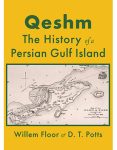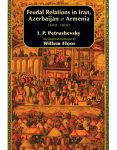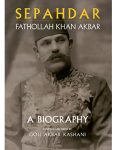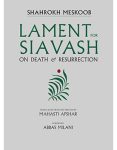About the Book
During the second half of the nineteenth century, in an effort to combat diseases such as the plague and cholera that spread with impunity across international borders, Iran was at the center of international politics and cooperation. The studies in this book begin with the role Iran played in the international efforts to mitigate the spread of these diseases at a time when the international medical community differed in their opinions about the contagious nature of these diseases and the need and usefulness of quarantine. The essays continue with discussing malaria and rinderpest, which also caused a great deal of human misery and economic loss. The Iranian government, as well as the Anglo-Iranian Oil Company–a major employer at the time–took steps to suppress and mitigate the effects of these diseases that ravaged the work force. Influenza was a relatively unknown disease for Iran, which in 1918 caused many deaths, like in the rest of the world, and thereafter, became part of its annual disease pattern. Finally, a rather little known medical condition, that of geophagy–the practice of eating earth–is discussed. In the 1850s, to develop its own medical infrastructure and improve public health the government of Iran hired foreign physicians such as Joseph-Désiré Tholozan and Johannes Lodewijk Schlimmer to train future Iranian physicians and provide medical advice and technical assistance. The essays about these two doctors contain exciting new research and information.
Reviews
Forthcoming
Excerpt
CONTENTS
INTRODUCTION ix
ONE
Plague and Cholera in Iran 1
Pestilential Outbreaks 2
Pre-1500 Period 2
Safavid-Afsharid-Zand 3
ta`un 6
Qajar Period 6
Vaba’ 16
TWO
MALARIA 29
Traditional Treatment 32
First Malaria Surveys 33
Caspian Provinces 34
Tehran District 35
Western Iran 37
Khuzestan 37
Bushehr 39
Other Regions 40
Three Distinct Regions 40
The Vectors 41
Anti-Malaria Program 42
Current Situation 46
THREE
Quarantine in Iran 47
Miasmic Theory 47
Contagion or Not? 48
Don’t Enter Infected Area 50
Government Takes an Interest 51
Quarantine Service 60
Southern Border 61
Northern Border 69
Eastern Border 73
Western Border 79
Discussion 85
Appendix I
The Turkish Sanitary Service and the Shiah Pilgrimage 90
‘Sanitary Contraband’ in Dead Bodies 91
FOUR
The Influenza Epidemic of 1918 in Iran 93
Introduction 93
A.R, Neligan Report on The Epidemic of Influenza in Persia – 1918 97
North from Russia 97
In the South from India 97
In the West from Mesopotamia 97
General Remarks 98
Local Reports 99
The Post-Pandemic Period 104
FIVE
A Neglected Aspect of The Social History of
The Iranian Oil Industry 107
The Case of Southern Khuzestan’s Early Medical Infrastructure 107
Introduction 107
Pre-Existing Conditions 108
APOC’s Early Medical Service 110
The Development of APOC’s Curative Medical Service 114
APOC’s Preventive Medical Activities 121
AIOC’s medical service at its demise 124
Discussion 139
SIX
Geophagy in Iran 130
SEVEN
The Early Steps Toward Veterinary Medicine in Iran 139
Appendix II
Facsimile of the Report by Captain Lawrence The Occurrence of
Rinderpest in Persia, 13 October 1919 146
EIGHT
Joseph-Désiré Tholozan 157
NINE
Johannes Lodewijk Schlimmer and the Creation of
Persian Medical Terminology 167
Schlimmer’s Dutch Family 167
Education in Rotterdam and Leiden 169
Departure for Iran via Syria 170
Government Physician in Rasht 172
Teacher at the Dar al-Fonun 173
Physician to Courtiers and Public Health Official 174
Schlimmer as Promoter of Dutch Trade 174
Schlimmer’s Final Years 176
Schlimmer’s Iranian Family 176
Schlimmer’s Contribution to Iran 179
Concluding Remarks 184
BIBLIOGRAPHY 189
INDEX 204
About the Author
Willem Floor studied development economics and non-western sociology, as well as Persian, Arabic and Islamology from 1963-67 at the University of Utrecht (the Netherlands). He received his doctoral degree from the University of Leiden in 1971. Since 1983, Dr. Floor was employed by the World Bank as an energy specialist, however, after his retirement in 2002, he has dedicated his time to the study of the social and political history of Iran, and has published extensively throughout this time. His books include: Public Health in Qajar Iran, Agriculture in Qajar Iran, and The History of Theater in Iran, as well as, The Persian Gulf: A Political and Economic History of 5 Port Cities, 1500-1730, its second volume, Persian Gulf: The Rise of the Gulf Arabs, 1747-1792, third volume, The Rise and Fall of Bandar-e Lengeh, the fourth volume, Bandar Abbas: The Natural Gateway of Southeast Iran, and the fifth volume, The Persian Gulf: Links with the Hinterland Bushehr, Borazjan, Kazerun, Banu Ka’b, & Bandar Abbas, The Persian Gulf: The Hula Arabs of The Shibkuh Coast of Iran, and The Persian Gulf: Dutch-Omani Relations A Commercial & Political History 1651-1806, and The Persian Gulf: Muscat – City, Society and Trade . He has also published, Travels Through Northern Persia, 1770-1774, Titles and Emoluments in Safavid Iran, and A Social History of Sexual Relations in Iran; Labor and Industry in Iran, 1850-1941; Guilds, Merchants and Ulama in 19th Century Iran; The Rise and Fall of Nader Shah; Games Persians Play, and History of Bread in Iran. His translations include: Samuel Gottlieb Gmelin’s Travels Through Northern Persia 1770–1774 , and with Hasan Javadi, Abbas Qoli Aqa Bakikhanov’s The Heavenly Rose-Garden: A History of Shirvan & Daghestan; Evliya Chelebi’s Travels in Iran and the Caucasus, 1647 and 1654; A Man of Two Worlds: Pedros Bedik in Iran, 1670–1675, Awake: A Moslem Woman’s Rare Memoir of Her Life and Partnership with the Editor of Molla Nasreddin, the Most Influential Satirical Journal of the Caucasus and Iran, 1907–1931, and Engelbert Kaempfer: Exotic Attractions in Persia, 1684–1688: Travels & Observations.








